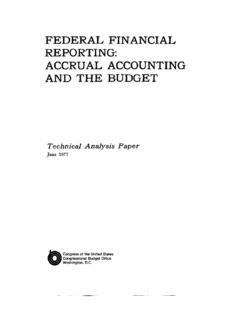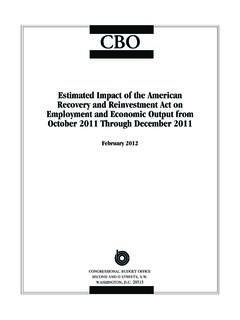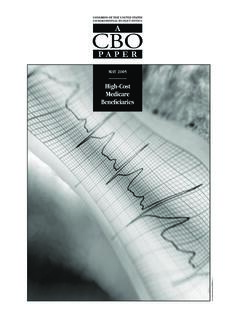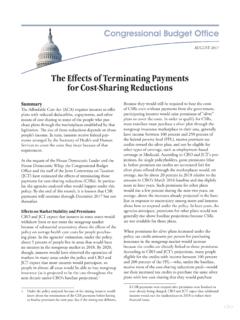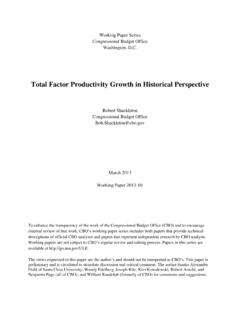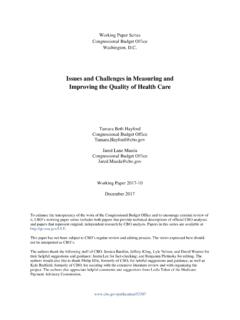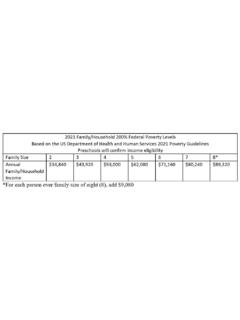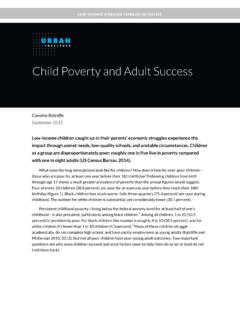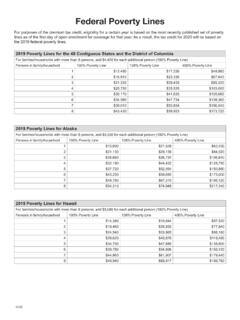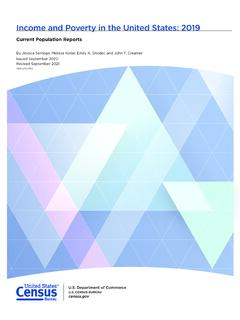Transcription of The Budgetary Effects of the Raise the Wage Act of 2021
1 Notes: Numbers in the text and tables may not add up to totals because of rounding. Budgetary Effects are reported for federal fiscal years, which run from October 1 to September 30 and are designated by the calendar year in which they end. Otherwise, the years referred to are calendar years. If enacted at the end of March 2021, the Raise the Wage Act of 2021 (S. 53, as introduced on January 26, 2021) would Raise the federal minimum wage, in annual increments, to $15 per hour by June 2025 and then adjust it to increase at the same rate as median hourly wages. In this report, the Congressional Budget Office estimates the bill s Effects on the federal budget. The cumulative budget deficit over the 2021 2031 period would increase by $54 billion.
2 Increases in annual deficits would be smaller before 2025, as the minimum-wage increases were being phased in, than in later years. Higher prices for goods and services stemming from the higher wages of workers paid at or near the minimum wage, such as those providing long-term health care would contribute to increases in federal spending. Changes in employment and in the distribution of income would increase spending for some programs (such as unemployment compensation), reduce spending for others (such as nutrition programs), and boost federal revenues (on net). Those estimates are consistent with CBO s conventional approach to estimating the costs of legislation.
3 In particular, they incorporate the assumption that nominal gross domestic product (GDP) would be unchanged. As a result, total income is roughly unchanged. Also, the deficit estimate presented above does not include increases in net outlays for interest on federal debt (as projected under current law) that would stem from the estimated Effects of higher interest rates and changes in inflation under the bill. Those interest costs would add $16 billion to the deficit from 2021 to 2031. The estimates in this report are based on CBO s most recent economic forecast, which was released earlier this month. CBO estimated the Budgetary Effects using techniques that it has developed over the past two years.
4 Those estimates are based on CBO s estimates of the bill s Effects on the economic behavior of individuals and firms which in this report refers to actions that change relative prices, the distribution of income, employment, and other economic factors. Underlying the Budgetary estimates are CBO s projections of how pay would change for people directly or potentially affected by an increase in the minimum wage that is, people who would otherwise have been paid hourly wages that were less than the proposed new minimum or slightly above it and how changes in pay would affect the number of people employed. From 2021 to 2031, the cumulative pay of affected people would increase, on net, by $333 billion an increased labor cost for firms considerably larger than the net effect on the budget deficit during that period.
5 The Budgetary Effects of the Raise the Wage Act of 2021 FEBRUARY 2021 THE Budgetary Effects OF THE Raise THE WAGE ACT OF 2021 FEBRUARY 2021 2 That net increase would result from higher pay ($509 billion) for people who were employed at higher hourly wages under the bill, offset by lower pay ($175 billion) because of reduced employment under the bill. In an average week in 2025, the year when the minimum wage would reach $15 per hour, 17 million workers whose wages would otherwise be below $15 per hour would be directly affected, and many of the 10 million workers whose wages would otherwise be slightly above that wage rate would also be affected. At that time, the Effects on workers and their families would include the following: Employment would be reduced by million workers, or percent, according to CBO s average estimate; and The number of people in poverty would be reduced by million.
6 This report provides the following details about the bill and CBO s estimates of its Effects on federal spending and revenues: Background on the Raise the Wage Act of 2021; Effects on spending for major health care programs; Effects on spending for unemployment compensation; Effects on spending for Social Security; Effects on spending for nutrition programs; Effects on other mandatory spending; Effects on revenues; Effects on discretionary outlays for wages of federal workers; Effects on net spending for interest; Uncertainty surrounding the Budgetary estimates; and How CBO s analysis of Budgetary Effects has changed. The report also provides the following information about changes in economic behavior underlying those estimates and about CBO s analytical methods: Effects on employment; Effects on wages of affected workers; Effects on the distribution of family income; Effects on real (inflation-adjusted) output; Effects on prices; Effects on the distribution of labor and capital income; Effects on interest rates; CBO s economic modeling approach; and Comparisons with CBO s July 2019 analysis.
7 THE Budgetary Effects OF THE Raise THE WAGE ACT OF 2021 FEBRUARY 2021 3 Background on the Raise the Wage Act of 2021 In this report, CBO analyzes the Raise the Wage Act of 2021 as introduced in the Senate on January 26, 2021. It would take effect on the first day of the third month after the date of enactment. If it was enacted at the end of March 2021, the minimum wage would increase by a set amount each year, starting in June 2021, until it reached $15 in June 2025 (see Table 1 on page 15). In subsequent years, it would increase by the annual percentage increase, if any, in the median hourly wage of all employees. The bill s provisions would cover most low-wage workers, but they would not cover the self-employed, casual babysitters, and certain seasonal workers.
8 The bill would also increase the minimum wage for teenagers and disabled workers, and it would increase the share of the minimum wage for tipped workers that must be paid by their employers. (The minimum wage for those workers has long been different from the minimum wage for other workers. Tipped workers are those whose compensation depends primarily on tips.) Effects on Spending for Major Health Care Programs The Raise the Wage Act of 2021 would affect spending for the major federal health care programs. Some of the Effects would involve workers employed in the home health care and nursing care industries; CBO projects that if current laws did not change, there would be roughly 3 million such workers by 2025, many of whom would earn less than $15 per hour.
9 federal programs, such as Medicaid and Medicare, pay for much of the care supplied by those industries. The effect of increases in the prices of health care stemming from a higher minimum wage is a key factor contributing to an increase in spending for those programs. The effect of changes in the distribution of income is another key factor. Those changes would put downward pressure on spending for Medicaid and increase spending for marketplace subsidies. Medicaid and CHIP. Under the bill, Medicaid spending would increase because the Effects of increases in the price of health care services and increases in enrollment by people who would be jobless as a result of the minimum-wage increase would outweigh the Effects of decreases in enrollment by people with higher income (see Table 2 on page 16).
10 Prices, such as those for long-term services and supports and medical services, would increase as a result of negotiations that accounted for higher costs of labor facing health care providers. The number of Medicaid enrollees would tend to rise because of increased enrollment among people who lost employment as a result of the minimum-wage increase and thus became eligible for the program. However, that tendency would be more than offset as the income of some enrollees rose above the thresholds for Medicaid eligibility, causing overall enrollment to decline. The Effects on spending for the Children s Health Insurance Program (CHIP) would similarly reflect higher prices for medical services, as well as a shift in enrollment from Medicaid to CHIP.

